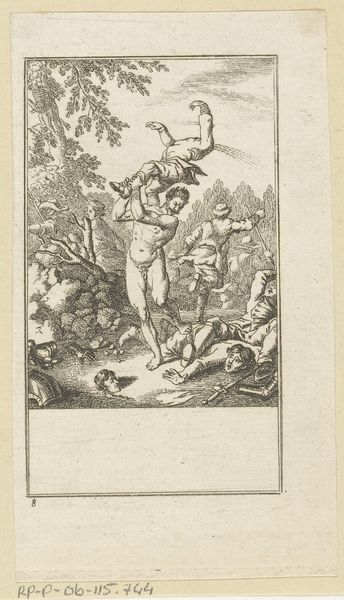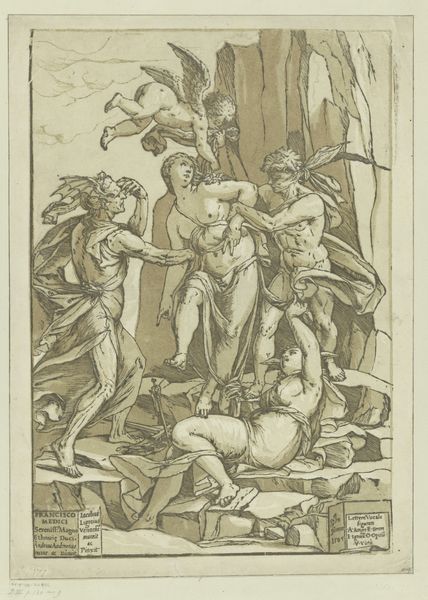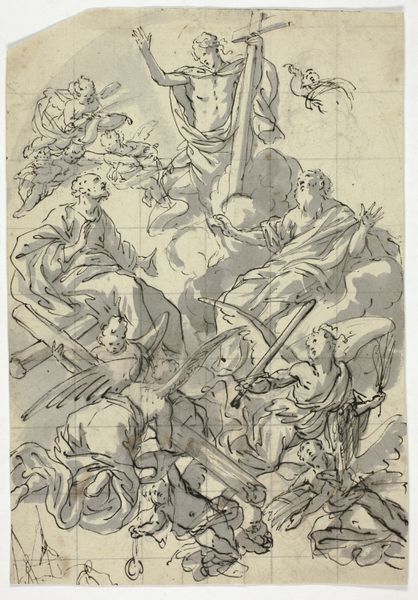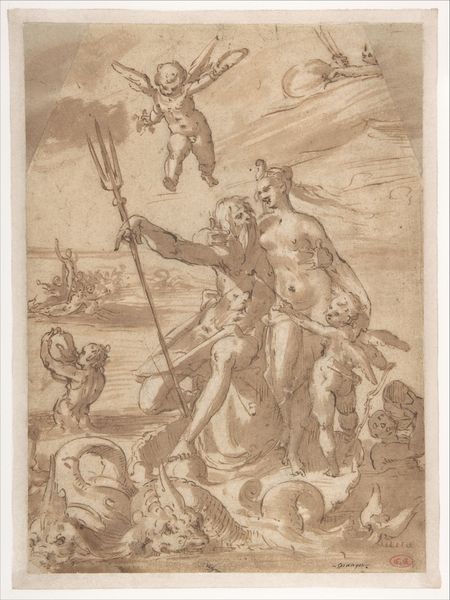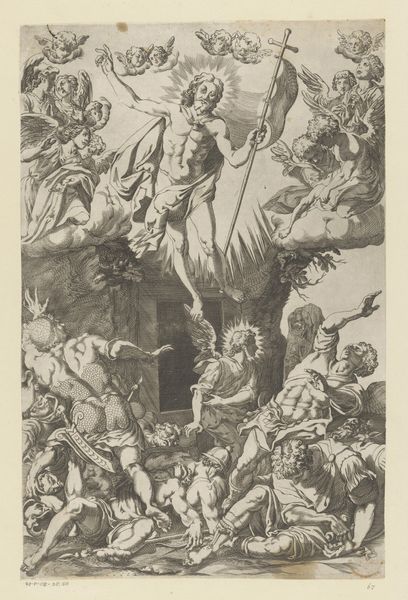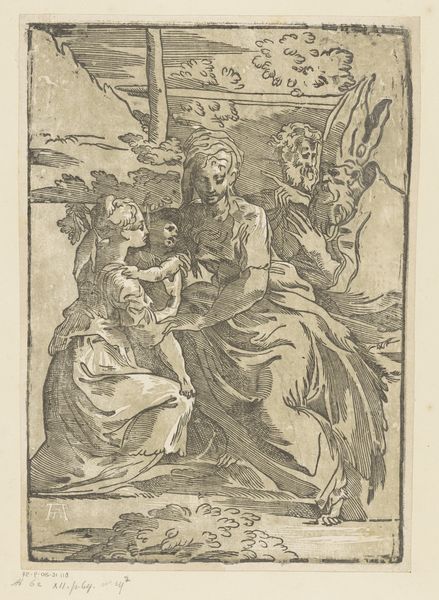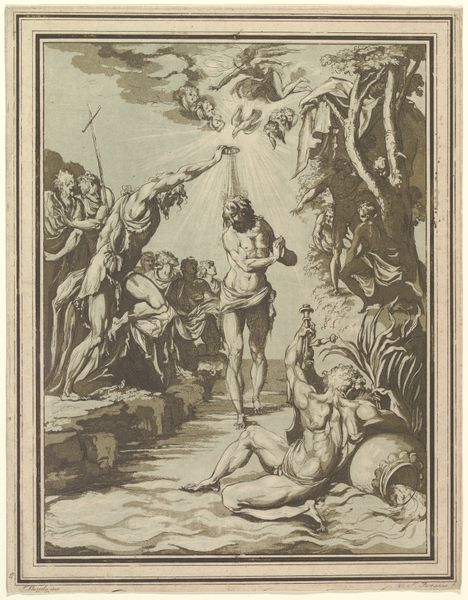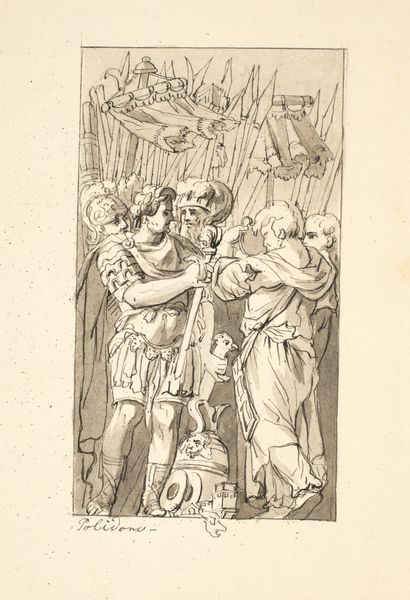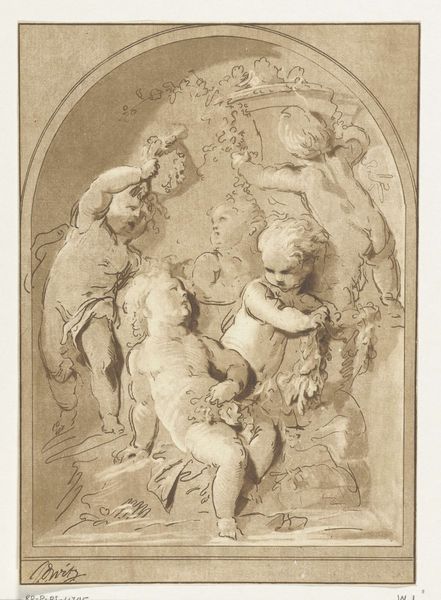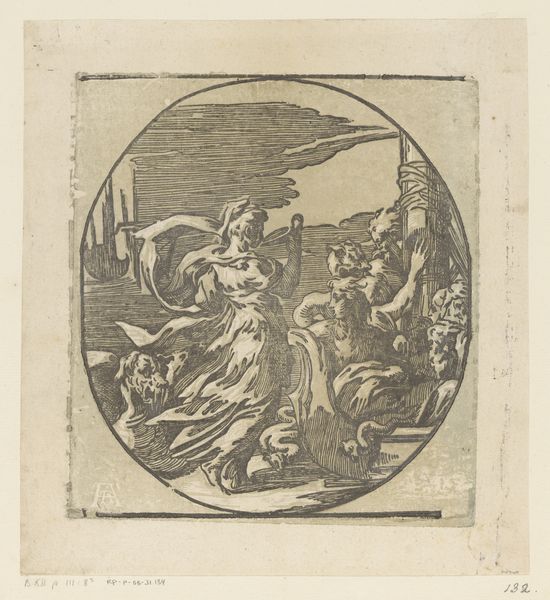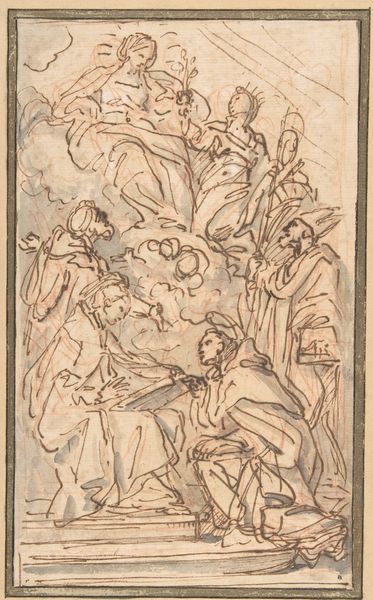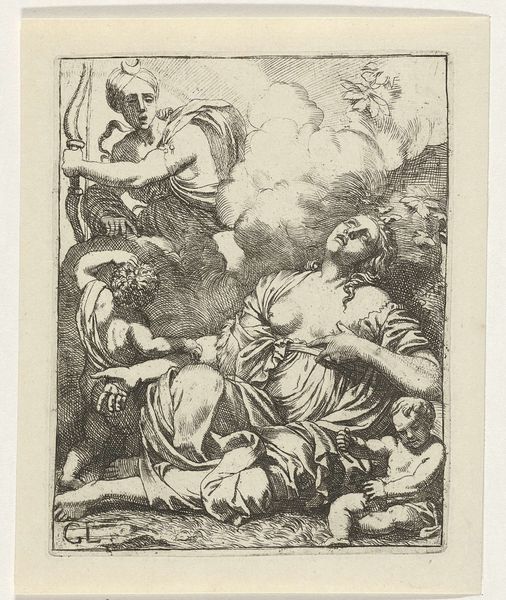
Dimensions: height 171 mm, width 109 mm
Copyright: Rijks Museum: Open Domain
Francois Philippe Charpentier made this drawing, "Amors in rust na de jacht," which translates to "Cupids resting after the hunt," using pen and brown ink, and brush in brown, sometime in the 18th century. The cherubic figures, symbols of love, are shown not in their usual amorous pursuits, but in a moment of playful leisure. This representation offers insight into the cultural milieu of 18th-century Europe, particularly France, where Charpentier was active. The Rococo period, with its emphasis on lightheartedness and pleasure, often featured mythological figures in scenes of dalliance and amusement, as we see here with Cupid and his fellows. Such depictions were not merely decorative; they reflected a broader societal preoccupation with leisure and the pleasures of life, particularly among the aristocratic elite who were key patrons of the arts. To fully understand this work, it's essential to consider its historical context. Researching the artistic conventions of the Rococo era and the social history of 18th-century France will provide a richer understanding of this drawing. The meaning of art is always contingent on its social and institutional context.
Comments
No comments
Be the first to comment and join the conversation on the ultimate creative platform.
